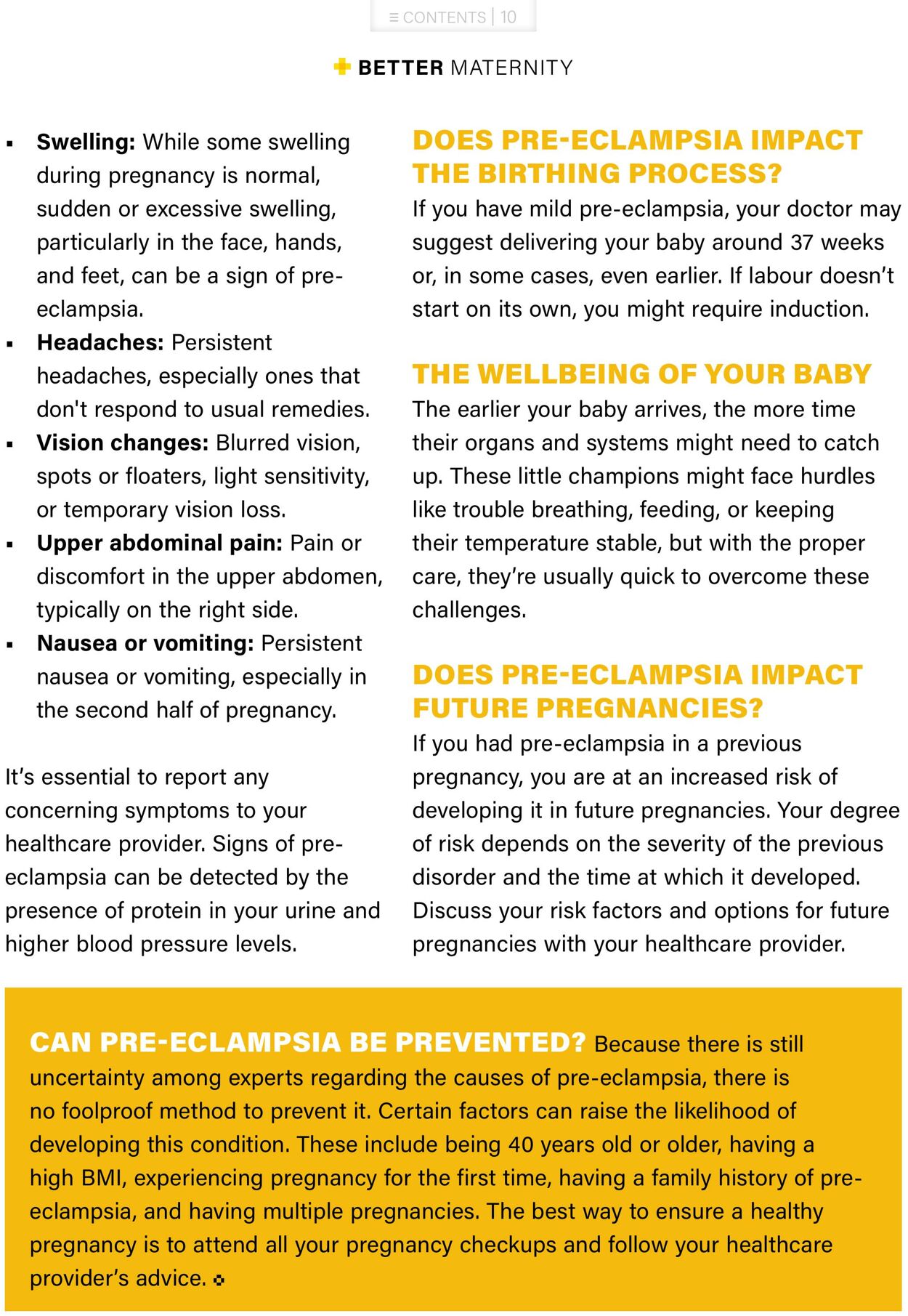













Products in this catalogue
BETTER MATERNITY « Swelling: While some swelling during pregnancy is normal, sudden or excessive swelling, particularly in the face, hands, and feet, can be a sign of pre- eclampsia. « Headaches: Persistent headaches, especially ones that don't respond to usual remedies. » Vision changes: Blurred vision, spots or floaters, light sensitivity, or temporary vision loss. » Upper abdominal pain: Pain or discomfort in the upper abdomen, typically on the right side. » Nausea or vomiting: Persistent nausea or vomiting, especially in the second half of pregnancy. It's essential to report any concerning symptoms to your healthcare provider. Signs of pre- eclampsia can be detected by the presence of protein in your urine and higher blood pressure levels. If you have mild pre-eclampsia, your doctor may suggest delivering your baby around 37 weeks or, in some cases, even earlier. If labour doesn't start on its own, you might require induction. The earlier your baby arrives, the more time their organs and systems might need to catch up. These little champions might face hurdles like trouble breathing, feeding, or keeping their temperature stable, but with the proper care, they're usually quick to overcome these challenges. If you had pre-eclampsia in a previous pregnancy, you are at an increased risk of developing it in future pregnancies. Your degree of risk depends on the severity of the previous disorder and the time at which it developed. Discuss your risk factors and options for future pregnancies with your healthcare provider. Because there is still uncertainty among experts regarding the causes of pre-eclampsia, there is no foolproof method to prevent it. Certain factors can raise the likelihood of developing this condition. These include being 40 years old or older, having a high BMI, experiencing pregnancy for the first time, having a family history of pre- eclampsia, and having multiple pregnancies. The best way to ensure a healthy pregnancy is to attend all your pregnancy checkups and follow your healthcare provider's advice. =
| Name | Details |
|---|